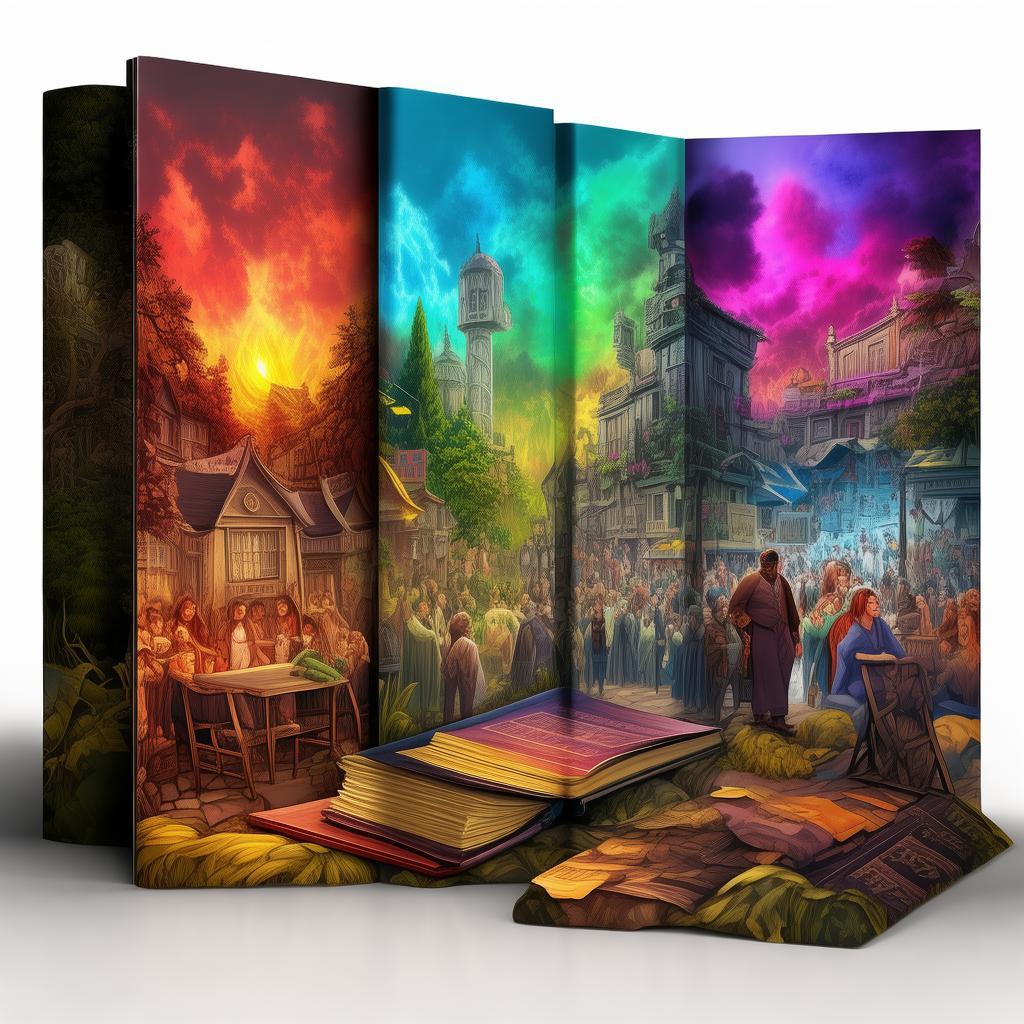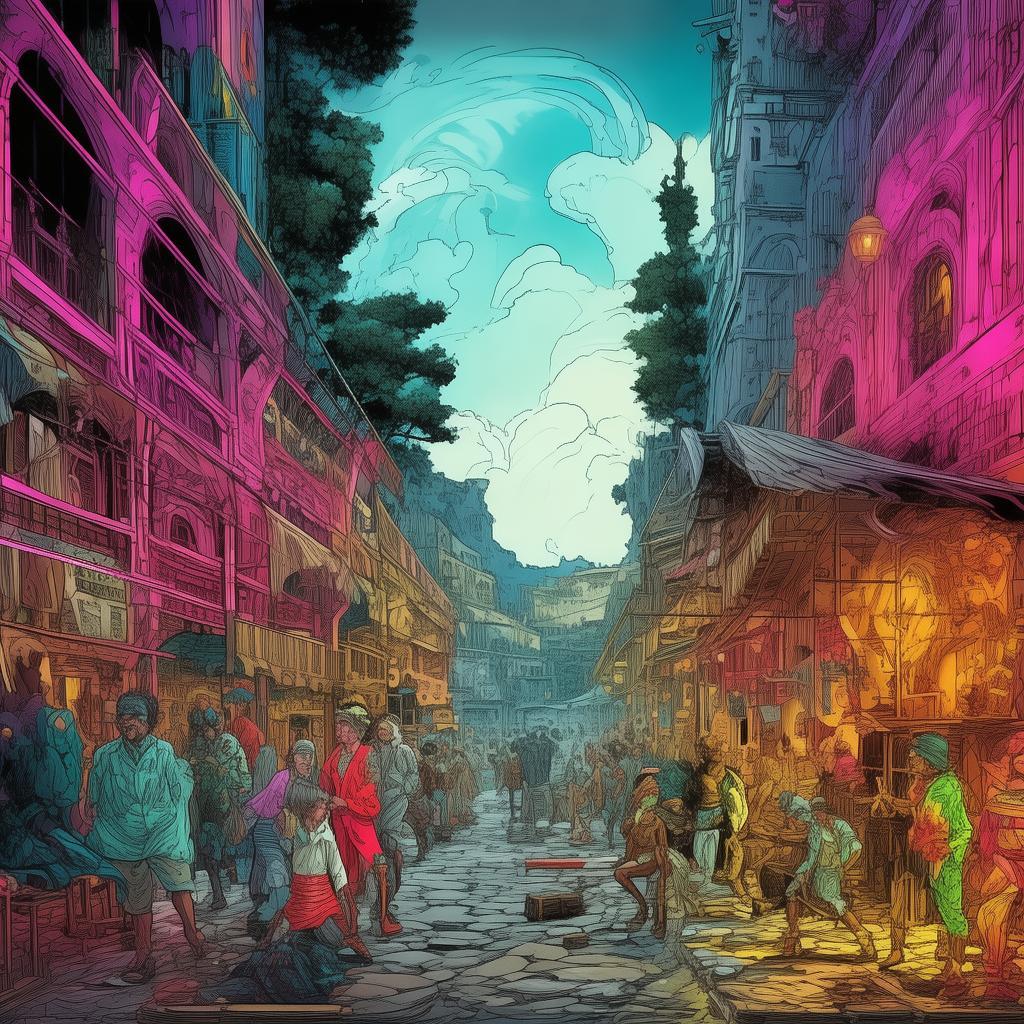The Sisters' Symphony: A Tale of Art and Betrayal
The sun hung low in the sky, casting a long, ominous shadow over the cobblestone streets of Vienna. Inside the grandiose Schönbrunn Palace, the air was thick with anticipation. It was the opening night of the Vienna Symphony, and the audience was buzzing with excitement. Among them were two sisters, Eliza and Clara, whose names were synonymous with the city's most celebrated musical talent.
Eliza, the elder sister, stood confidently on the stage, her fingers dancing across the piano keys with the grace of a celestial being. Clara, the younger, sat beside her, her violin bow tracing the melody that had captivated Vienna for years. Their music was a symphony of life, a testament to the love they shared for the art that united them.
But as the final note of their performance echoed through the concert hall, a silence fell over the audience. Eliza's eyes darted across the sea of faces, searching for something—or someone—that wasn't there. A hush fell over the crowd, and the realization that something was missing struck like a thunderbolt.
The lights dimmed, and the spotlight shone upon the empty space where Clara had stood just moments before. Panic gripped the room as the audience gasped and murmured, their eyes darting to Eliza, who was now frozen in place, a mixture of horror and disbelief on her face.
In the aftermath, the police were called, and the search for Clara began. But the trail was cold, and the police soon turned to the sisters for any clue that might lead to their sister's whereabouts. Eliza, in her grief, could offer nothing but a series of cryptic messages that Clara had left behind, messages that seemed to point to a deeper, more sinister secret than anyone could have imagined.
The first message was a simple note found on Clara's bed, a piece of parchment adorned with the musical staff. It read, "The key is in the silence." Eliza's mind raced as she tried to decipher the meaning, but it was a puzzle she couldn't solve alone.
As the days turned into weeks, the police grew more desperate. Eliza, too, was losing hope, but the cryptic messages kept appearing. The next one was a painting, a portrait of their late mother, her eyes filled with a knowing glint that seemed to speak of secrets untold. A single note, etched in gold along the bottom of the frame, read, "She saw it all."
Eliza knew she had to find a way to piece together the puzzle that her sister had left behind. She turned to her old mentor, an aging composer named Herr Schmid, who had once taught both sisters the language of music. Herr Schmid, with his silver hair and piercing blue eyes, had always been a source of wisdom and guidance for Eliza.
"You must understand that music is not just sound," Herr Schmid said, his voice echoing with the weight of his years. "It is a language, a code that can reveal the deepest truths."
Eliza's eyes widened as she realized that Clara's messages were a symphony in their own right, a composition that held the key to her sister's disappearance. She began to transcribe the notes from the messages into a musical score, her fingers flying across the keyboard as she sought to unlock the secrets hidden within the melodies.
The score revealed a series of notes that, when played in a specific sequence, formed a map. Eliza and Herr Schmid set out on a harrowing journey to follow the clues, leading them to a forgotten room deep within the bowels of the Schönbrunn Palace. Inside, they found a hidden door, its surface etched with the same musical staff as the messages.
As they pushed the door open, they were greeted by a room filled with the remnants of a life long forgotten. Clara's violin lay on a table, her bow still clutched in her hand. In the center of the room stood a large, ornate mirror, its surface cracked and tarnished with age.
Eliza approached the mirror, her reflection staring back at her with a mixture of sorrow and determination. She reached out and touched the surface, and to her horror, the mirror began to shatter, revealing a hidden compartment within.
Inside the compartment, Eliza found a journal belonging to their mother. As she opened it, her eyes were drawn to a passage that described a forbidden love, a love that had been hidden from the world for generations. The journal spoke of a family legacy, a legacy that had been kept secret for fear of what it would reveal.

Eliza realized that Clara had been searching for the truth behind their family's past, a truth that had the power to shatter the foundations of their lives. The final message had been a warning, a premonition that their discovery would bring danger.
The sisters were no longer safe. The truth had a price, and someone was willing to pay it to keep it hidden.
Eliza and Herr Schmid knew they had to act quickly. They returned to the room and, using the clues they had gathered, they set off on a perilous journey to uncover the full extent of the family's secret. They faced betrayal, deceit, and the ultimate sacrifice as they pieced together the shattered fragments of their lives.
The climax of their quest came in the form of a revelation that turned everything they thought they knew about their family on its head. It was a revelation that would change the course of their lives forever, a revelation that would force them to confront the darkest corners of their souls.
As the final notes of their composition echoed through the empty room, Eliza and Clara's music had once again become a symphony of life and love, but this time, it was a symphony that would echo through the ages, a testament to the courage and resilience of two sisters who had faced the darkest of times and emerged stronger.
The ending of their tale was a full circle, a story of redemption and forgiveness that left the audience, and those who had followed their journey, reflecting on the power of art and the enduring strength of the human spirit. The Sisters' Symphony had not just captivated Vienna, but it had touched the hearts of all who heard it, a reminder that even in the darkest of times, music could bring light to the world.
✨ Original Statement ✨
All articles published on this website (including but not limited to text, images, videos, and other content) are original or authorized for reposting and are protected by relevant laws. Without the explicit written permission of this website, no individual or organization may copy, modify, repost, or use the content for commercial purposes.
If you need to quote or cooperate, please contact this site for authorization. We reserve the right to pursue legal responsibility for any unauthorized use.
Hereby declared.









